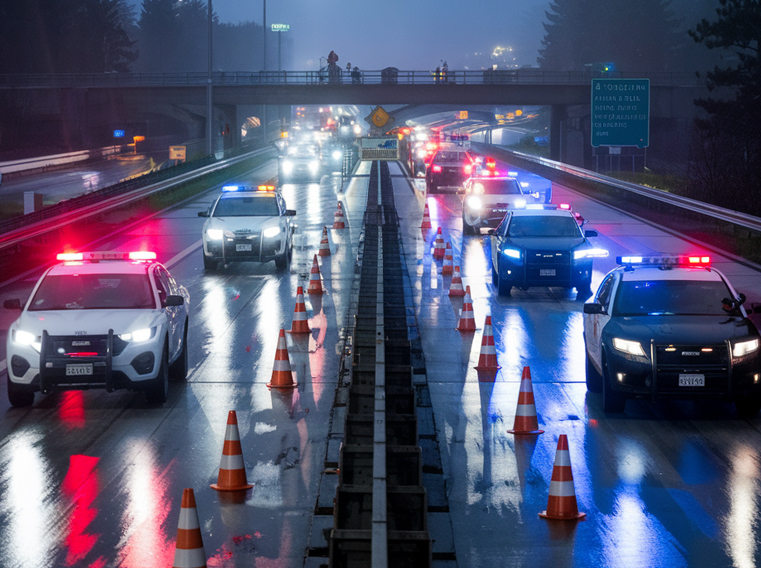Discover how community solidarity and public engagement unravel mysteries, strengthen emergency response, and foster a safer future. Join us in this collective journey!
A month-long campaign to combat drink and drug driving saw more than 400 arrests across the region this past December. The intensive operation, aimed at making roads safer during the festive season, underscores the ongoing challenge of impaired driving. With an average of 13 arrests per day, the figures highlight the prevalence of this dangerous behaviour despite years of public awareness campaigns. As authorities analyse the data, questions arise about the effectiveness of current deterrents and the potential need for stricter measures to curb this persistent threat to public safety.
Intensive December Campaign Reveals Alarming Impaired Driving Statistics
In a concerted effort to combat drink and drug driving during the festive season, law enforcement agencies across the region conducted an intensive month-long operation that yielded sobering results. Throughout December, officers made a staggering 413 arrests related to impaired driving, averaging 13 apprehensions per day.
The campaign, designed to enhance road safety during a period traditionally associated with increased alcohol consumption, utilised a combination of targeted patrols, roadside checkpoints, and intelligence-led policing. Officers were equipped with state-of-the-art breathalysers and drug testing kits to swiftly identify and detain offenders.
Chief Inspector Sarah Thompson, who spearheaded the operation, stated, "While we're pleased with the number of dangerous drivers we've taken off the roads, these figures are deeply concerning. Each arrest potentially represents a life saved or a serious accident averted."
The breakdown of arrests revealed that 287 individuals were detained for alcohol-related offences, while 126 were apprehended for drug-related infractions. Notably, 22% of those arrested were repeat offenders, highlighting a persistent issue within certain segments of the driving population.
Community Impact and Future Implications
The high number of arrests during this targeted campaign has sparked intense debate within local communities and among road safety advocates. Many are questioning the effectiveness of current deterrents and calling for more stringent measures to address what appears to be an endemic problem.
Dr. Emily Cartwright, a road safety expert at Slough University, commented, "These figures suggest that despite years of public awareness campaigns, a significant portion of drivers still fail to grasp the gravity of impaired driving. We may need to reassess our approach to education and consider harsher penalties for offenders."
Local authorities are now exploring additional strategies to combat impaired driving. Proposals include increased funding for late-night public transport during holiday periods, partnerships with ride-sharing services to offer discounted fares, and the introduction of ignition interlock devices for convicted offenders.
The economic impact of the crackdown is also under scrutiny. Local hospitality businesses have reported a noticeable decrease in alcohol sales during the campaign period, prompting discussions about balancing public safety with economic interests.
As the community grapples with these revelations, there's a growing consensus that a multi-faceted approach involving stricter enforcement, enhanced education, and innovative deterrents may be necessary to effect lasting change in driver behaviour and ultimately reduce the incidence of impaired driving on our roads.
A Sobering Reality: Charting a Course for Safer Roads

The December crackdown on impaired driving, resulting in over 400 arrests, serves as a stark reminder of the persistent menace lurking on our roads. This intensive campaign, while successful in removing dangerous drivers from the streets, unveils a deeply troubling reality: despite years of awareness efforts, a significant portion of motorists continue to flout the law and endanger lives.
The implications of these findings stretch far beyond mere statistics. They present both a challenge and an opportunity for our community to reassess its approach to road safety. The high number of repeat offenders suggests a need for more robust rehabilitation programmes, while the economic impact on local businesses highlights the delicate balance between public safety and commercial interests.
Moving forward, we must ask ourselves: How can we foster a culture where impaired driving becomes socially unacceptable? The proposed measures, from increased late-night public transport to ignition interlock devices, offer promising avenues. However, true change will require a collective effort from law enforcement, policymakers, businesses, and citizens alike.
As we reflect on these sobering figures, each of us must consider our role in promoting road safety. Will you pledge to be a responsible driver and actively discourage impaired driving among your peers? The road to safer streets begins with individual choices, and the time for action is now.